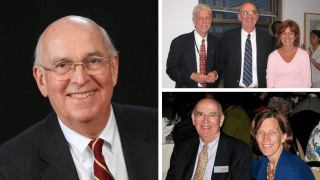On March 4, 2020, Learning Forward and two members of the Prichard Committee Student Voice Team, Emanuelle Sippy and Rachel Belin, led a conversation about how educators can learn from and with students, not just for them. Sippy and Belin wrote the article “Students as education partners.” In this article, Sippy and Belin discuss how the Prichard Committee Student Voice Team is putting student voice front & center in Kentucky.
As discussed in the February issue of The Learning Professional, conversations about students’ needs are at the center of great schools. But how often do educators listen to students’ perspectives?
We were excited to have participation from both educators and young people during this chat. In case you missed the Twitter chat, below are questions that we asked participants regarding student voice and professional learning and some tweets from some of the participants, including tweets from our special guests, Sippy and Belin.
Here is the first question that we asked during the chat:
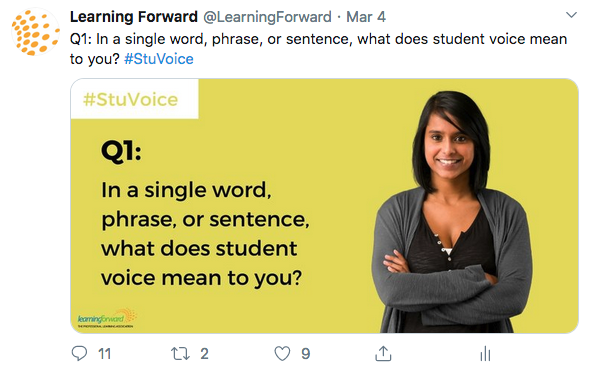
Special guests Emanuelle Sippy and Rachel Belin answered question one with the following:


Fiona Longmuir, a lecturer in educational leadership from Melbourne, Australia answered question 1 with the following:

Andrew Brennen, Co-Founder of Prichard Committee Student Voice Team, brought up marginalized voices:

Lydia Burns from Kentucky highlighted the “co-design” concept:
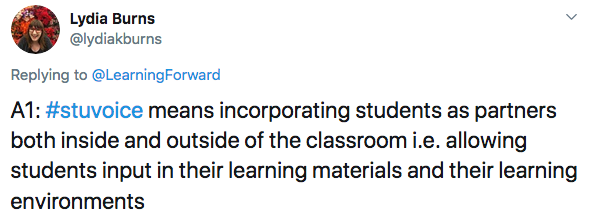
Let’s move on to question two of the chat:
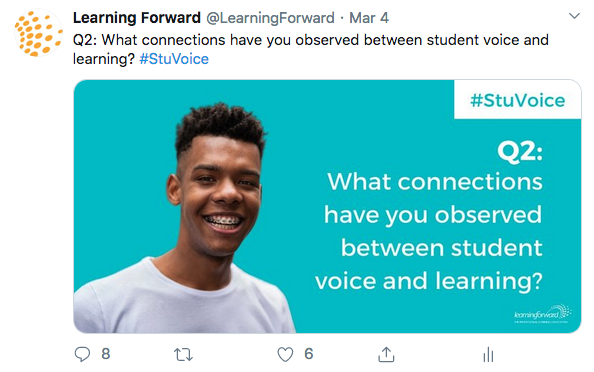
Special guest Rachel Belin and Emanuelle Sippy answered question two with the following:
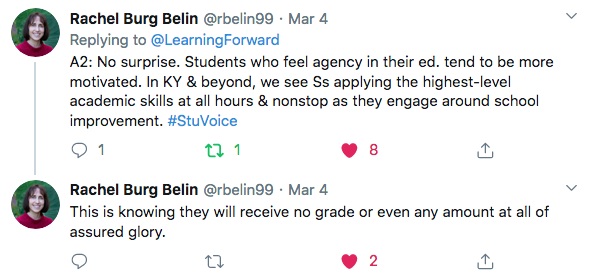

Debi Tanton, Executive Director for Professional Learning for Mesquite ISD brought up how students take ownership of their learning:

Stacy Thompson, Literacy Specialist at the University of Minnesota, made an interesting argument for student results:

Here is what we asked participants for question three:
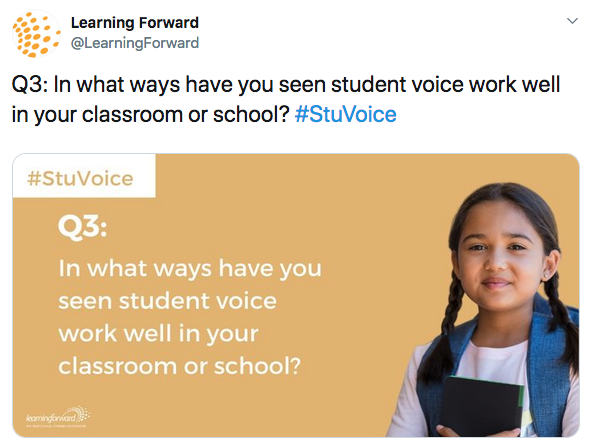
Special guests Emanuelle Sippy and Rachel Belin answered question three with the following:
Chief Learning Officer of Learning Forward Frederick Brown joined the conversation and mentioned a way he included student perspectives when he served as principal:
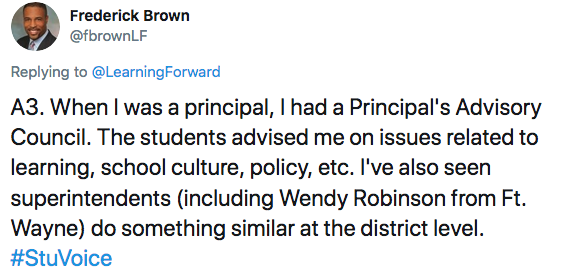
Mollie Pope from Kentucky added an interesting student-perspective to the conversation when she shared how her voice has been used in her school:
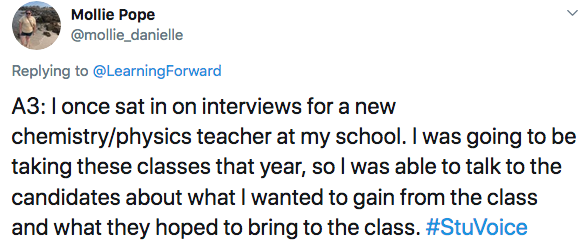
Adam Hengel, a coordinator of instructional services from Wisconsin, said “empathy interviews” have worked well in his district.
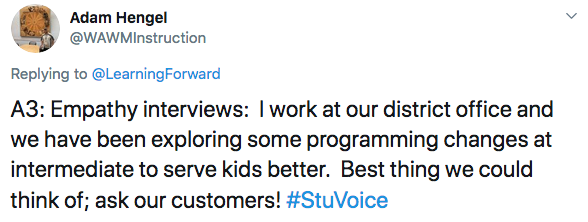
Question four added professional learning as an element and asked participants to what professional learning supports do educators need to listen to and act on student voice more:
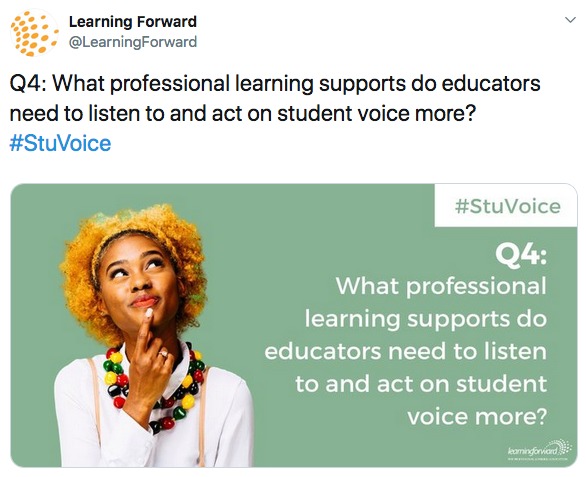
Special guest Emanuelle Sippy answered question four with the following:

Our other special guest Rachel Belin recommended SoundOut to have some practical teacher tips on unleashing student voice in the classroom.
Lydia Burns suggested educators consider consulting their student population on issues of climate and agency:

Question five continued on the professional learning path and asked participants how to incorporate student voice and perspectives in professional learning structures and systems:
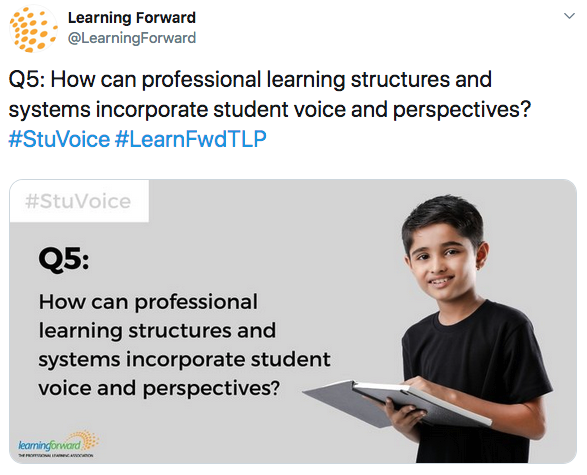
Here’s what our special guests Rachel Belin and Emanuelle Sippy said in response to question five:
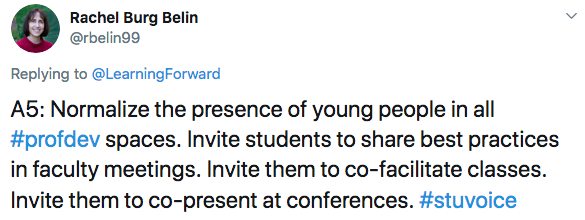


Fiona Longmuir appreciated question five and suggested educators include the voices of all young people in professional learning and system change:

Here’s what Mollie Pope said in response to question five:
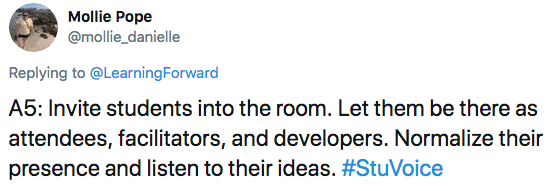
Adam Hengel and his team conduct student learner panels every month:
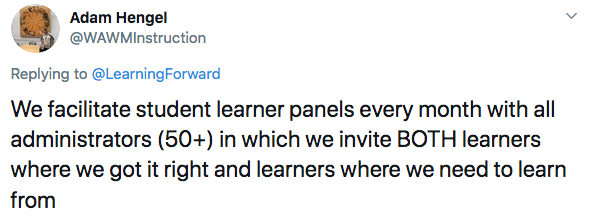
Below is the final question of the chat:

In response to the final question of the chat, our special guests Emanuelle Sippy and Rachel Belin helped educators understand how to be intentional:
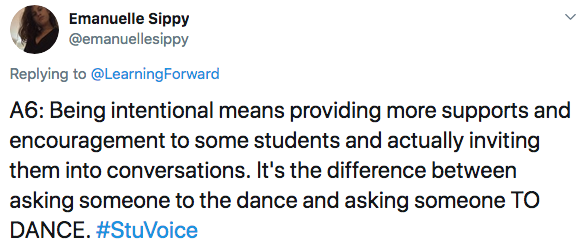

The last question sparked a dialogue between two participants of the chat, Andrew Brennen and SoundOut:
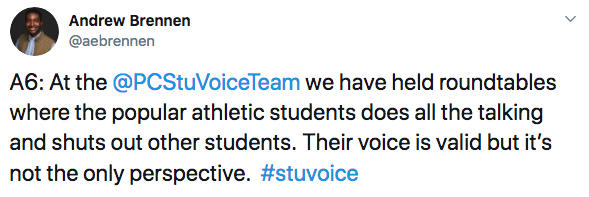

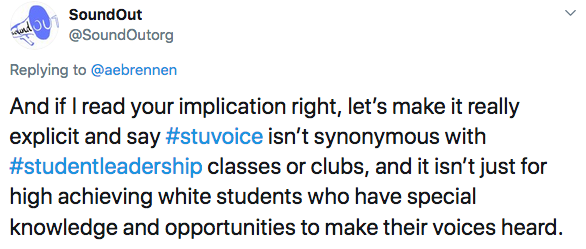
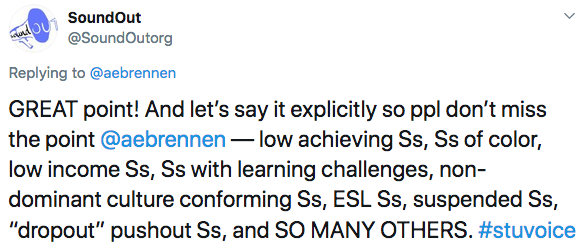
Charlene M. Goss highlights how learning spaces can be transformed in response to the final question of the chat:
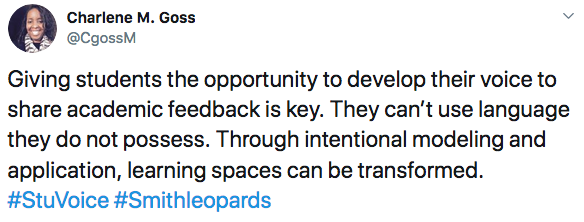
We want to thank everyone who participated in the chat, especially our special guests Rachel Belin and Emanuelle Sippy. There were many great contributions to the conversation. We hope you found some of these insights and real-world examples from educators helpful.
To be notified of future Twitter chats, follow us on Twitter @LearningForward and #LearnFwdTLP.


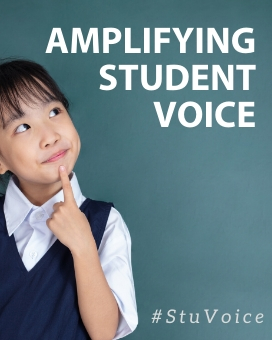

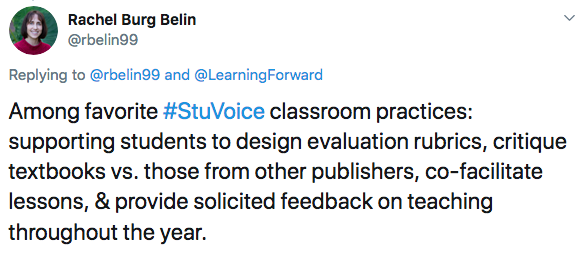

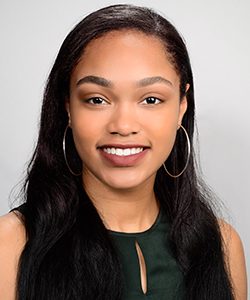
![Poil blog v1[1]](https://learningforward.org/wp-content/uploads/bb-plugin/cache/poil-blog-v11-custom_crop.jpg)
